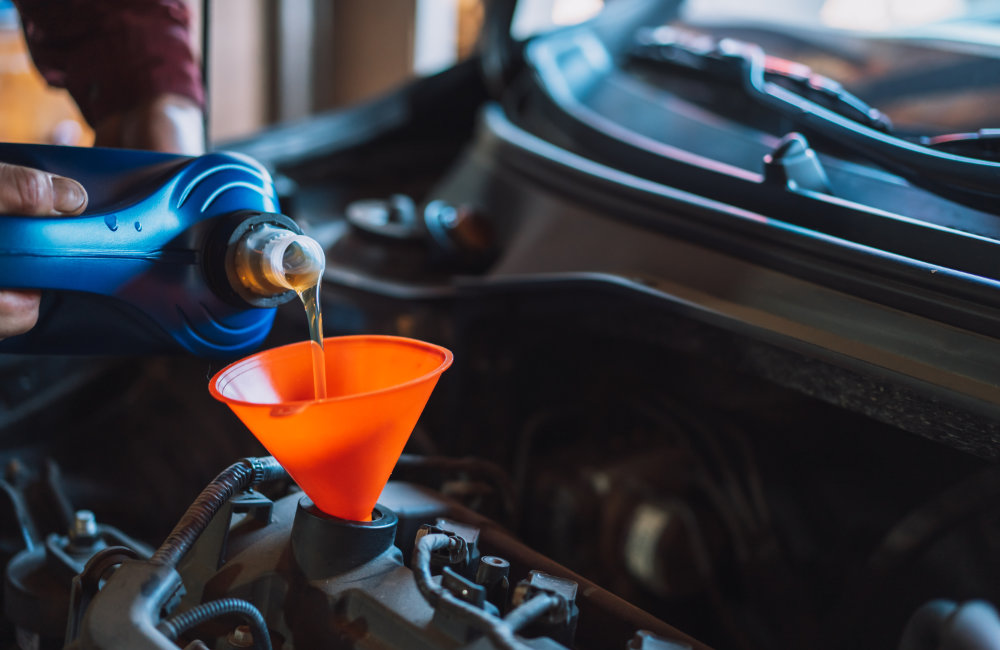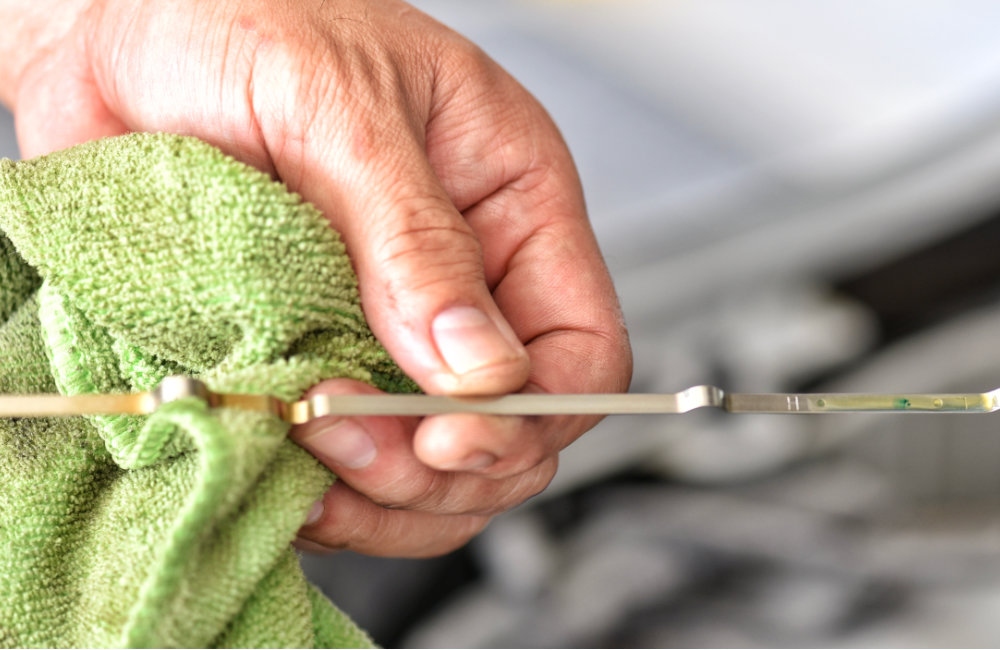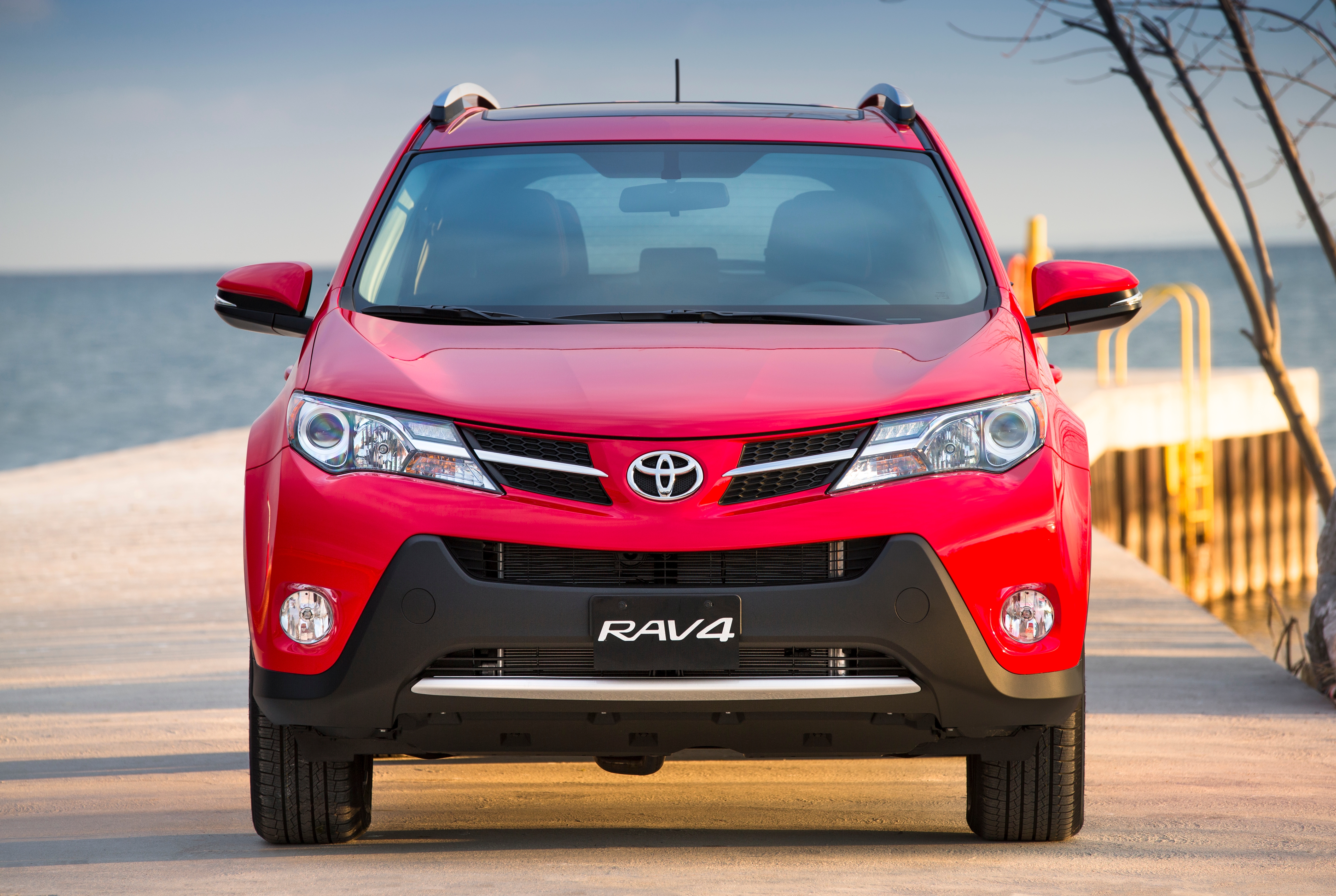
Skip to section...
- •What is the purpose of engine oil change?
- •How often should you change the oil?
- •How to change the oil yourself?
You know you sometimes need to change your engine oil, but your knowledge on the subject remains vague? You're not alone: whether it's about the frequency or the type of oil, it can be difficult to navigate.
Occasion Beaucage clarifies everything: learn more about oil changes and the steps to do it yourself.
What is the purpose of engine oil change?
First of all, why should you change the oil? Is your mechanic just trying to squeeze extra money out of you by suggesting it? The answer to the latter question is no: it is indeed a crucial step to preserve your engine.

In fact, oil lubricates parts while protecting, cooling, and cleaning the entire engine. It limits wear and corrosion of the various drivetrain components. However, over time, it itself degrades and loses efficiency, no longer performing its role as well.
By changing the oil, you ensure the proper functioning and longevity of your engine, plain and simple.
The dangers of forgetting to do this change
Thinking of saving money, some drivers tend to put off their car's oil change. Sometimes, it may also slip your mind!
When this happens, oil can accumulate dirt, debris, and a gelatinous sludge called "gunk". These contribute to wearing out your engine and ultimately destroying it. Moreover, this leads to increased fuel consumption.
Average prices when done by a mechanic
The cost of an oil change varies depending on a few factors: how much engine oil do you need? What kind of oil are you using? The price of the oil is usually included in the bill. So you can expect to pay between $50 and over $100 depending on the mechanic and the vehicle you have!
Discover our prepaid maintenance planHow often should you change the oil?
To know how often to change the oil, the best way is to consult your owner's manual. In some cases, it will be recommended to do it every 5,000 km or every 8,000 km; in other cases, you could go 15,000 km between synthetic oil changes.
Factors to consider
For some drivers, it is recommended to change the oil more frequently, especially if:
- •Your engine is older
- •You drive at high speeds
- •You live in a cold, hot, or dusty area
So consider your living environment, driving habits, and your vehicle's model year.
How to change the oil yourself?
Doing your own oil change can be a good idea to save money! However, it is important to know what oil to use and have the necessary tools before starting.
The best oil for my engine
Once again, the owner's manual will be your best ally to know the recommended engine oil! Some models will need 2-stroke oil, others 4-stroke oil. You will also need to choose between:
- •Conventional (mineral) oil
- •Synthetic oil
- •Semi-synthetic oil
Synthetic oil provides better performance but is more expensive; a blend (semi-synthetic) can be a good compromise. Be careful: some older models only accept conventional engine oil! Consider the viscosity index recommended by the manufacturer.
Necessary tools
Before starting the operation, make sure you have all the necessary equipment; otherwise, you could end up being caught off guard! Plan for:
- •Your new car oil
(obviously!) - •A jack
- •A cloth
- •Large pliers
- •A funnel
- •A container
- •A new filter

Also, having tools to unscrew the nuts will undoubtedly be of great help.
Steps to follow
Before you begin, warm up your engine: this will activate the metal particles, which may not be eliminated when cold. Once done, lift your vehicle using the jack. Then follow these steps:
- •Place the container under the cap, then remove the nut. The oil will immediately drain out; be careful with your hands as the oil will be hot!
- •Let the oil drain until it is completely empty, then replace the cap.
- •Remove the old filter, which is located near the crankcase. You will need pliers to loosen it.
- •Moisten the new filter with a little oil to ensure its tightness, then place it by screwing it in by hand first, then gently tightening it with the pliers.
- •Put oil back into the conduit using a funnel. Don't go too fast!
- •Start your car to check the oil level. Wait a bit, then remove the metal rod from the crankcase to check the level.
Once your oil is changed, all that's left is to recycle the old oil! To do this, reuse the funnel, this time to pour the used oil into the container, then take this container to a recycling center. That's it!
You can also leave your vehicle in professional hands to perform your oil change. At Occasion Beaucage, we offer advantageous service plans. Check out our website for more information or come calculate the trade-in value of your current vehicle!
Questions? Contact us!




